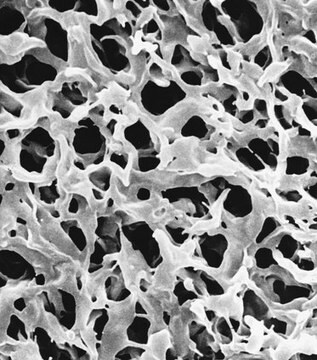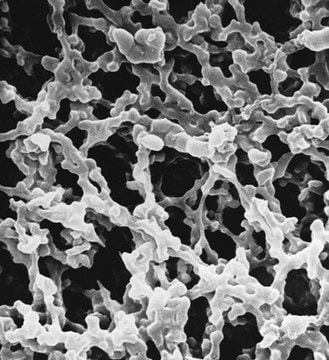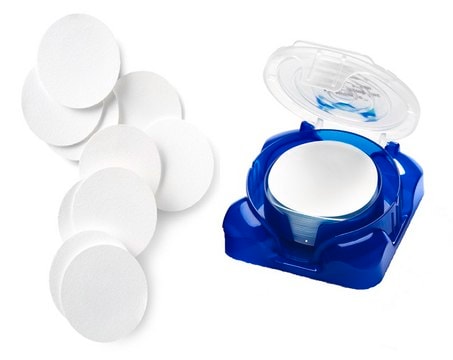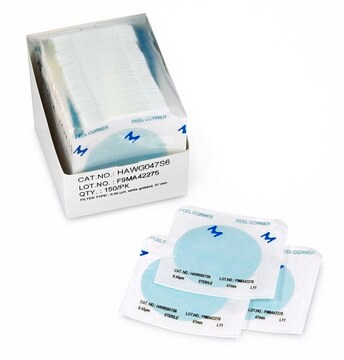HVLP04700
PVDF Membrane Filter, 0.45 μm Pore Size
Durapore®, filter diam. 47 mm, hydrophilic, white
Synonim(y):
Durapore® Membrane Filter, 0.45 µm, Hydrophilic PVDF membrane filter discs, Polyvinylidene difluoride membrane filter discs, Polyvinylidene fluoride membrane filter discs
About This Item
Polecane produkty
Materiały
PVDF membrane
plain filter
white filter
Poziom jakości
sterylność
non-sterile
Właściwości
hydrophilic
producent / nazwa handlowa
Durapore®
Millipore
sustainability
Greener Alternative Product
Parametry
>2.6 mL/min-cm2 water flow rate
4 L/min-cm2 air flow rate
85 °C max. temp.
Średnica
47 mm
śr. filtra
47 mm
grubość
125 μm
substancje ekstrahujące się grawimetrycznie
0.5%
kolor
white
współczynnik refrakcji
n/D 1.42
Matryca
Durapore®
wielkość porów
0.45 μm pore size
70 % porosity
punkt pęcherzykowania
≥1.55 bar, air with water at 23 °C
kategoria ekologicznej alternatywy
Warunki transportu
ambient
Szukasz podobnych produktów? Odwiedź Przewodnik dotyczący porównywania produktów
Opis ogólny
Features & Benefits
- Available in several pore sizes (both hydrophilic and hydrophobic varieties) to suit your application needs
- Durapore membrane filters have very low protein binding to minimize interaction with your sample and maximize recovery
Zastosowanie
Inne uwagi
- Organism Retention: Microorganism
- Mode of Action: Filtration (size exclusion)
- Application: General laboratory filtration
- Intended Use: Retention or removal of biological contaminants
- Instructions for Use: Sterilizing filtration of a liquid through a membrane with a 0.2 μm (or smaller) pore size effectively removes biological contaminants, including bacteria, mold and yeast. For the selective retention of larger biological contaminents, liquid filtration through membranes with 0.45 μm (or larger) pore sizes may be used to trap and support microorganism growth for subsequent culture and analysis
- Storage Statement: Store in dry location
- Disposal Statement: Dispose of in accordance with applicable federal, state and local regulations.
Informacje prawne
Kod klasy składowania
11 - Combustible Solids
Klasa zagrożenia wodnego (WGK)
WGK 3
Temperatura zapłonu (°F)
Not applicable
Temperatura zapłonu (°C)
Not applicable
Certyfikaty analizy (CoA)
Poszukaj Certyfikaty analizy (CoA), wpisując numer partii/serii produktów. Numery serii i partii można znaleźć na etykiecie produktu po słowach „seria” lub „partia”.
Masz już ten produkt?
Dokumenty związane z niedawno zakupionymi produktami zostały zamieszczone w Bibliotece dokumentów.
Klienci oglądali również te produkty
Nasz zespół naukowców ma doświadczenie we wszystkich obszarach badań, w tym w naukach przyrodniczych, materiałoznawstwie, syntezie chemicznej, chromatografii, analityce i wielu innych dziedzinach.
Skontaktuj się z zespołem ds. pomocy technicznej



